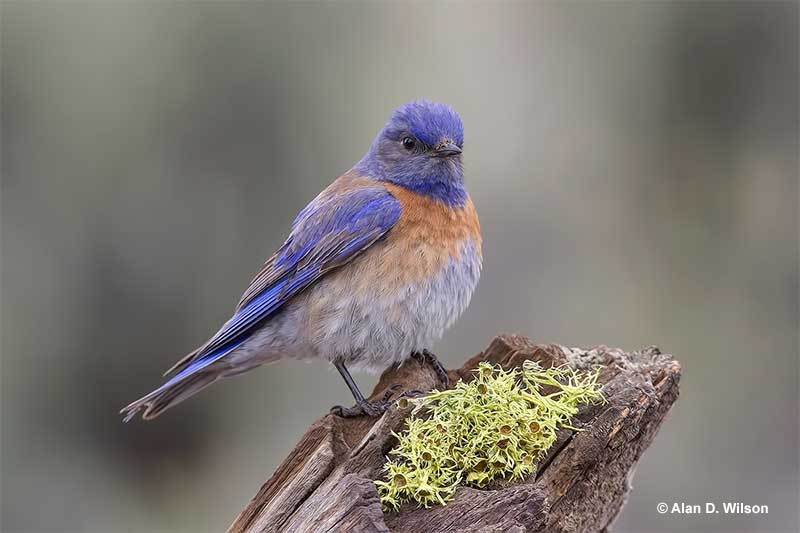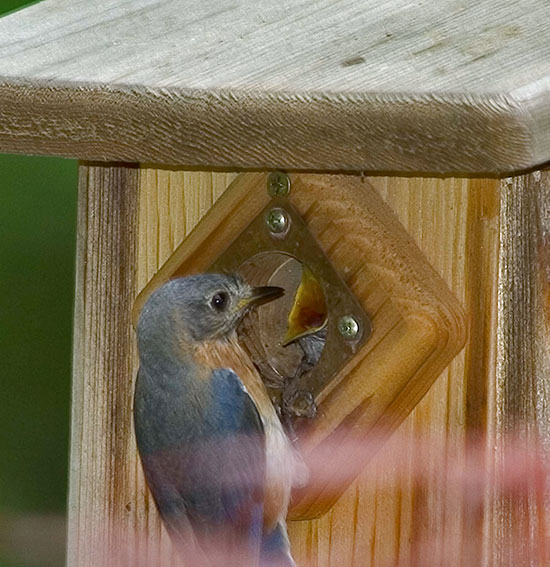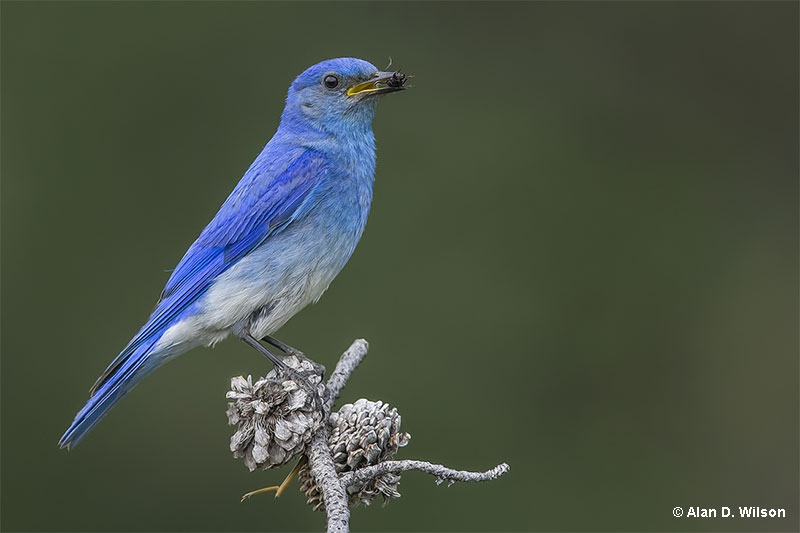
Bluebirds are among the best backyard birds. There are many beautiful birds to choose from, but it’s hard to compete with pastel blue and peach plumage!
You might ask what bluebirding is – it’s the act of supporting our backyard bluebirds by creating sustainable habitats for them – even just by putting up nest boxes.
But why is bluebirding important? And why has it gained traction in recent decades?
On this page
The Hardships of Bluebirds
Bluebirds are fairly common, but these small thrushes have gone through some ups and downs. Historically, these meadow specialists were probably restricted to open Longleaf Pine forests and occasional gaps in deciduous forest. As the vast eastern forests were cut down, Eastern Bluebirds actually benefited from the higher number of open areas.
Related: What do bluebirds symbolize?
Their populations jumped during the 1800s, and they became a common farmland bird. However, during the late 1800s, a couple of events happened that seriously impacted Eastern Bluebirds. These two events were the introductions of House Sparrows and European Starlings to North America.

Over the years bluebird have faced many setbacks, starting with losing their nest boxes to other species.
Like the Eastern Bluebird, this pair of invasive species also use tree cavities for nesting. They are also aggressive, and when they compete with the bluebird for nesting sites, they always win.
As the sparrows and starlings spread, Eastern Bluebirds were pushed out and began to seriously decline.
This decline continued into the 20th century and although Eastern Bluebirds still persisted in many places, they ceased to be an abundant farmland bird. If that basic problem wasn’t bad enough, Eastern Bluebirds took another big hit in the middle of the 20th century.
Along with any other birds, these insectivores were seriously affected by DDT and other pesticides.
The Benefits of Bluebirds
Bluebirds are certainly nice birds to have in the neighborhood. I like all birds, I enjoy watching all of them. However, it’s hard to take my eyes off a gorgeous Eastern Bluebird! The same goes for Western Bluebirds and Mountains Bluebirds, the other pair of eye-catching western bluebird species.
There is something to be said about watching visually appealing birds, especially when they have a unique appearance. Sure, the details in sparrow plumage have their own brand of beauty but a male Eastern Bluebird looks like turquoise, blue sky, and a hint of a sunset come to life!
Avian eye candy is important not just because those jewel birds look nice. These beauties remind us that the natural world is full of wonders, free and natural treasures we can even find in our own backyards. Eastern Bluebirds have that star bird quality, but they also help in other ways.
These small thrushes are one of many birds that act as natural pest control. They don’t just eat a few insects now and then, either. No, bluebirds go above and beyond by devouring huge numbers of bugs.
In spring and summer, as bluebirds constantly catch grasshoppers, larvae, and other insects, they eliminate insects that damage all sorts of crops.
How Can We Help Bluebirds?
It’s worth it to help bluebirds. Bluebirding highlights meadows and big backyards with natural beauty while also helping our gardens and crops.

To give bluebirds a hand, first and foremost, we have to make sure they have proper habitat. These small thrushes need big meadows or large, open lawns near scattered trees.
The other vital considerations are the three main factors that can harm bluebirds: invasive species, predators, and pesticides.
House Sparrows and Starlings are common, but we can exclude them by providing Eastern Bluebirds with a nest box that has a 1.5-inch diameter hole. This is too small for the invasive birds.
Read more: Nest box sizes
Leaving off a perch below the nesting hole will also discourage them. Don’t worry about the bluebirds; they don’t need that perch. They hover in front of and perch right on the nest hole!
To keep predators from finding the nest box, don’t visit it when the nest is in use! Walking to the nest box leaves a scent trail for predators to follow. You also want to install the nest box out of reach of cats that can leap up to it.
Finally, don’t use chemical pesticides that can make the bird sick as well as kill off insects the bluebirds need.
Frequently Asked Questions
Why do we need bluebirds?
Bluebirds are crucial to us – as native birds, they eat lots of harmful insects. Besides, they look absolutely beautiful!
How can we save bluebirds?
We can save bluebirds by providing them with pesticide-free meadows and nest boxes especially designed for them.
Are bluebirds good luck?
Yes, bluebirds are good luck. Watching these beautiful birds can raise your spirits!
What are bluebird house dimensions?
Bluebird house dimensions are nest boxes that are around 10 inches tall and have a 1.5-diameter nest hole that is 5 to 8 inches above the nest box floor.
Do bluebirds return to the same place?
Bluebirds do usually return to the same place where they nested the previous year.

